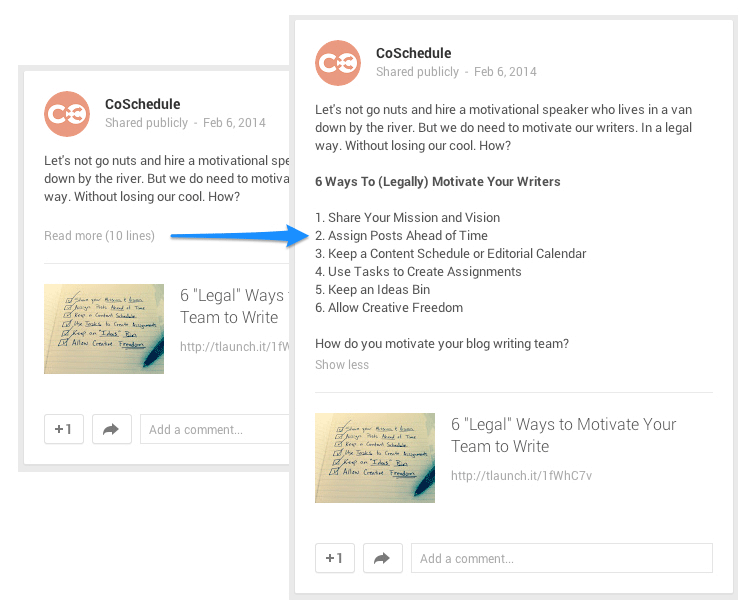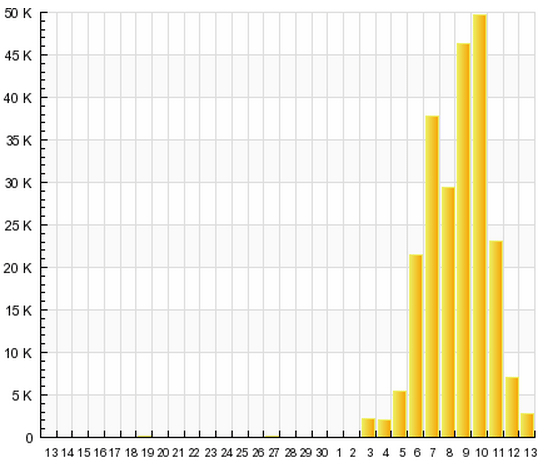
A good example of this is the way Google+ allows for longer copy and basic markdown text in each post. As you can see from the example above, we regularly add bulleted lists and bold text to our posts to make certain items stand out and provide additional value to our readers.
Another great example is how Twitter displays images, as shown below. Posts that include images are much more noticeable than posts that do not. This is a simple way to get noticed more, and squeeze out a few extra clicks.

Step 4 – Monitor Your Results
As always, it is important to monitor your results to make sure the changes you make to your social publishing schedule actually work. Here are a few of the things you want to watch out for:- A decrease or an increase in post activity. As you adjust your schedule, notice if there is an increase or decrease in post activity? More clicks? More retweets? More shares? Sometimes, this is a gut-level check, and other times you might want to dip into your Bit.ly stats or utilize custom Google Analytics tags to make sure you are right.
- Negative feedback from your audience. Although it is rare, some users may notice your increased activity and comment on it. Take this to heart, but don’t let one complaint spoil a good thing. Use metrics to verify whether your schedule is too aggressive or misguided.
- A slowly fading interest in your content. I think the biggest threat to a social feed that has become “too busy” is a natural tendency of followers to simply ignore the content. Watch your click throughs to make sure this doesn’t happen to you.
Content Shared More than Once Might Go Viral
Not long ago, one of our own writers had a post go viral a full month after it was originally published, thanks to her implementation of this exact social promotion strategy. Julie’s message schedule was pretty simple. She tweeted once when the post went live, and then repeated it once 30 days later. The first tweet went relatively unnoticed, but the second one (a full month later) took off.Regarding the message, Julie says: “The original publishing of the post didn’t cause much interest, beyond regular readers, nor did any of my posts on Facebook, Twitter, Tumblr, or LinkedIn. It was a little tweet I sent out, just one tweet, a month later. I was very glad I had put into place a structured system that didn’t just blast out one social message at the moment of publishing and call it good enough.”

In Julie’s case, that second tweet brought her some pretty big traffic, and made the extra effort totally worth it. By sharing your content on social media more than once, you not only stand a chance of doubling your traffic, you also may double your chances of striking a chord and going viral. Of course, you should never become a spammer. Always remember there is a right way and a wrong way to share your content. Choose wisely.
https://blog.kissmetrics.com/double-your-social-media-traffic/
About the Author: Garrett Moon is a founder at CoSchedule, a WordPress editorial calendar that allows you to schedule your blogs posts and social media messages together on an easy drag-and-drop calendar. Get a free blog editorial calendar template for 2014. Follow him on Twitter or Google+.

No comments:
Post a Comment